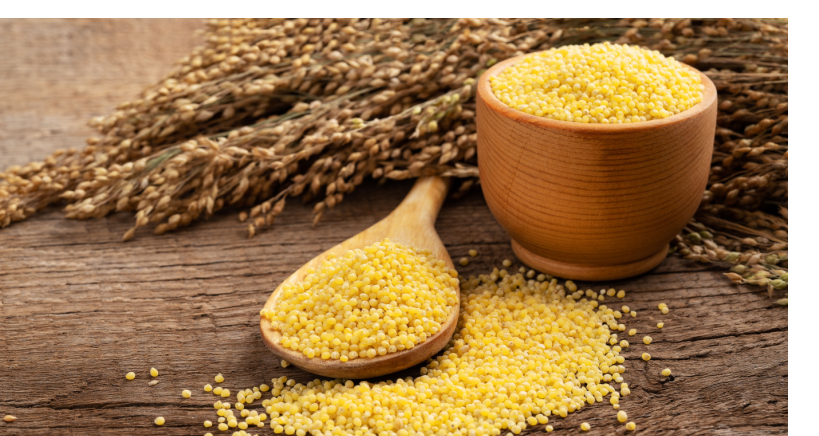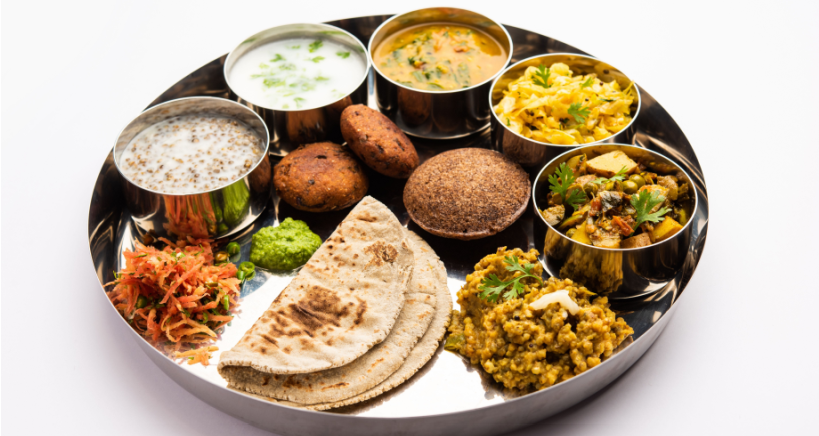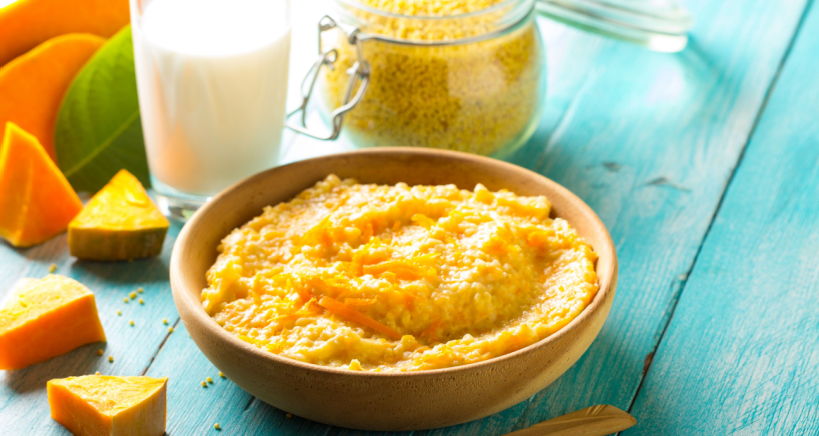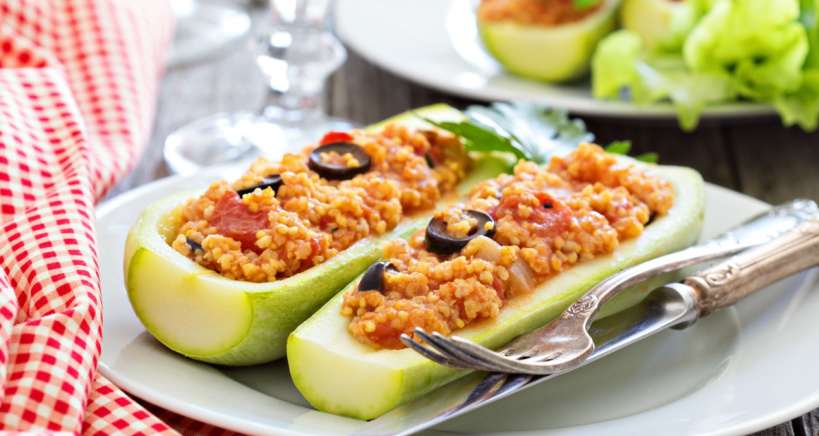
Bread is often referred to as the staff of life. This isn’t an exaggeration. Nearly every culture on every continent has built itself on a specific type of bread. However, not all of these breads are made from the “run of the mill” (pun intended) wheat flour that we are so used to consuming. Grains, also called cereal crops, are harvested grass seeds and fruits. These cereals make up nearly 50% of global food consumption, but there are a wide variety of grains, and each culture and region has its own preferred or traditional grain. The Americas, for example, built their civilizations on the maize and corn that their ancestors domesticated. Injera, a gluten-free spongy flatbread made from the teff grass, is a staple of Ethiopian cuisine. And, of course, many parts of Asia are nearly synonymous with rice.
In the increasingly globalized world, consumers enjoy “going against the grain” by experimenting with new, exciting, and different grains, many of which come with nutritional or agricultural benefits. A few years ago, quinoa (actually a pseudo-grain, since it comes from a flowering plant and not a grass) made its pop-culture debut as an exotic grain substitute that was also high in protein. This year brings another “exotic” superfood grain crop to center stage. The United Nations declared 2023 the year of the millet. The millet is a grain family that is nutritious and gluten-free and may also hold the solution to feeding a growing world. Here’s the scoop on millet, and why you should integrate it into your dishes.
What is Millet?
Millet is a grain family native to China, but one that has been a staple cereal crop for India and parts of Africa for millenia. The millet family boasts a number of staple plants including:
- Finger millet: (called Ragi in India): Finger millet’s generic name Elueusine comes from a Greek goddess associated with agriculture. It earns this moniker by virtue of its agricultural efficiency. It grows well even in nitrogen-sparse soils, and it’s the most climate resilient millet crop. For these reasons, finger millet is sometimes referred to as “famine crop.”
- Foxtail millet: (called Korra in India): Named for the bushy, orange, curved shape of the plant, foxtail millets originated in China. Since then, the cereal has spread to India where locals use it as a rice substitute and grind it into flour to make breads and desserts. Foxtail millet is also popular as a holistic medicinal and nutritional supplement. The little superfood grain may aid in fighting diabetes, heart disease, digestional problems, and cancer.
- Kodo millet: Although kodo millet is used as a flour or rice substitute in parts of the world, some farmers consider this grass a weed, as it tends to pop up in rice fields. Kodo millet is a hardy seed that grows well in nutrient sparse conditions.
- Pearl millet: This is the most common millet variety. Although it originated in Africa, pearl millet is now grown worldwide, including in the United States. It’s often used as animal feed or to produce hay, but nearly 100 million people (mostly in India and Africa) also rely on pearl millet as a staple grain.
- Fonio: This West African super grain millet is also called “hungry rice,” and it’s been giving quinoa a run for its money. Fonio is considered an “ancient grain” because it’s still cultivated in the same unrefined and unprocessed manner it was thousands of years ago. And it’s certainly ancient, boasting more than 5,000 years of human consumption. In the past it was considered a royal food — some Egyptians rulers were even buried with fonio. Fonio is light and fluffy with a nutty flavor.
What are the Benefits of Millet?
There’s a reason millet is being celebrated by the UN as 2023’s big superfood offering. Millet brings with it a host of benefits from the local to the global level.
For consumers, millet is a trendy addition to modern diets. More and more consumers are opting for gluten-free, and millet is a great, gluten-free alternative. Millet is versatile, so it can be ground up into a flour, sprinkled on a salad, or eaten on its own, in place of rice. In addition to being gluten-free, millet is significantly healthier than wheat. Millet is packed with nutrients, including iron, calcium, and potassium. They are also a whole grain, high in fiber. Some medical professionals surmise that a millet-centric diet can keep sugar levels stable and reduce the risk of diabetes. For those looking to spice up their cooking and baking, millet also adds a mild nuttiness and sweetness to dishes.

Millet also grows in drier conditions and requires less nutrients to seed than other cereals. Not only is millet hardy, it makes an ideal intercrop – a crop cultivated by farmers in between cycles of planting and harvesting their main crop. That’s because millet composts the soil that it grows in slowly over time, so the soil retains its health and fertility. It is also a good intercrop because it grows relatively quickly, and it takes only a few months from the time the seeds are planted until they bear fruit.
In addition to its agricultural hardiness, millet is a dense and filling superfood. It can keep hunger at bay for longer than other cereals, especially the refined grains that make up a large portion of modern, western diets. This means the grain holds a lot of promise globally. With the global population increasing exponentially, millet may be an important component to feeding the world. Especially because it is hardier and requires less water and other resources to grow.
From Farm to Table
No matter what reason you want to go millet, whether personal health, culinary exploration, gluten friendly dishes, or global responsibility, here’s how to bring it from the field to your kitchen.
If you are working with dried, whole millet seeds, always rinse them first in warm water to ensure they are clean and rehydrated. Fill up a mixing bowl with water and millet seeds and swirl them gently with your hands. Drain off the cloudy water. Repeat as needed before transferring the millet to a strainer and straining out the excess water. You can also lightly toast raw millet seeds in a dry pan for a minute or two if you want your recipe to have a nuttier flavor.
How to Cook Millet
The Instant Pot is ideal for working with millet seeds. The seeds tend to fall apart while cooking, and it’s hard to get that fluffy, grainy outcome, but the Instant Pot locks in the moisture and heat, and turns out tasty, fluffy millet nearly every time. Add millet, salt, and water to the Instant Pot and seal the lid tightly. You can add anywhere from two to four cups of water for every cup of millet, depending on how creamy or chewy you like your cooked millet to be. Cook the millet for ten minutes under high pressure. Turn the pot to the Keep Warm setting and let sit for ten minutes. Vent off all the steam. Next, open the lid carefully, trying to prevent the condensation on the inside of the lid from falling into the prepared millet. Fluff the cooked millet with a fork and add it to the recipe of your choice or eat it as is.
If you don’t have an Instant Pot or you prefer the “old-fashioned” method, you can treat millet like its stovetop quinoa or rice “cousins.” Put the millet in a pot of lightly salted water. Bring the water to a light boil. Cover the pot and lower the heat. Cook for about 20 minutes or until all the water is absorbed into the grains. While the millet is cooking, resist the urge to uncover, stir, or check on it, because disturbing the seeds too much can make them fall apart. Once the water is absorbed, remove the pot from heat, let sit for five minutes, fluff, and enjoy. If the water has been burnt off or absorbed, but the grain is still hard, you can remove the pot from heat and allow the residual heat to do the heavy lifting. Cover the pot with a thick towel and let it sit for around 20 minutes until the millet is ready.
If you are looking for a creamier or more flavorful millet, you can prepare it like pilaf. First, saute the raw millet in oil. You can add aromatics, spices, and herbs to the oil to give your cooked millet a flavor boost. Saute the grains for about two minutes. Then, fill the pot with water and bring the millet and water to a boil. Reduce the heat and cook until the water is absorbed.

You can also treat the millet seeds like oatmeal. They make for a delicious and nutritious breakfast. Cook the millet in a pot of water, milk, and salt, or prepare the mixture in an Instant Pot. Reduce the heat, and let the creamy mixture be absorbed into the grains. Add butter, sweetener, or any other flavoring of choice to your millet porridge and serve.
Baking with Millet
Millet flour is a popular gluten-free substitute that you can find at health food stores. Millet flour makes healthy baked goods and imparts a nutty flavor. A great tip for gluten-free bakers is that if you can’t find millet flour, you can make your own from millet seed (make sure you use the hulled variety that lacks the hard hull around the seed). Pour the seeds into a high-speed blender and blend for 30 seconds. Then, scrape down the edges of the blender, and blend it again for 30 seconds. Repeat, until you have a flour-like consistency. Next, use a fine-mesh sieve to strain the flour and pull out any pieces that are too large to combine in a baked dish. You can place these larger pieces back in the blender as well.
Since millet flour can make baked goods dense and grainy, the recommendation is to only use 20% of your flour mixture from millet flour. For an ideal gluten-free flour blend that incorporates millet’s nutty flavor and health benefits, consider combining it with oat flour, sweet rice flour, and tapioca flour. There are also a lot of recipes online for gluten-free flour blends and millet inspired baked goods so there’s no reason not to experiment and get your hands dirty.
Millet Stuffed Zucchini
This recipe for millet-stuffed zucchini is a healthy, vegan, plant-based, fusion dish. It combines the traditional Asian/African grain with Mexican inspired flavors. Here, millet acts as a delicious stand-in for rice and the zucchini can be swiped out for peppers if desired.

Ingredients:
- Six zucchinis
- 1-1/2 cups of millet
- 1 can of red or pinto beans
- 1/2 cup of corn (you can opt for fresh, frozen, or canned
- 1-1/2 cupx of salsa
- 1 cup of Mexican blend shredded cheese
- Cumin to taste
- Salt to taste
- Chipotle powder to taste
- 1/4 cup of chopped fresh cilantro
- Instructions:
- Preheat the oven to 350 degrees and grease a baking sheet.
- Cut the zucchinis in half and take out the seeds.
- Place the zucchinis on the baking sheet and par-bake in the oven for 20 minutes or until softened.
- While the zucchinis are baking, cook the millet in a pot or Instant Pot with a little bit of salt.
- Drain and rinse the beans.
- Add the beans, corn, salsa, cheese, cumin, salt, and chipotle to the pot of cooked millet and simmer on low for a few minutes, stirring continuously.
- Once zucchinis have baked, fill them with the millet mixture, and top with cilantro.
- Add additional cheese to the top of the zucchini and cover until melted.
- Enjoy!